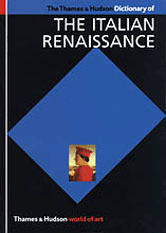 1571–1610, Italian painter. His strong chiaroscuro technique of partially illuminating figures against a dark background was immediately adopted by his contemporaries.
1571–1610, Italian painter. His strong chiaroscuro technique of partially illuminating figures against a dark background was immediately adopted by his contemporaries.
 Venetian painter. Of the very first rank among the artists of the Renaissance, Titian had an immense influence on succeeding generations of painters, especially in his use of color.
Venetian painter. Of the very first rank among the artists of the Renaissance, Titian had an immense influence on succeeding generations of painters, especially in his use of color.

Surveys painting, sculpture, and architectural styles from the Renaissance to the present. Emphasizes the historical context of art movements as well as analysis of the work of individual artists.
 Key Buildings from Prehistory to the Present
Features some of the most important buildings in the history of world architecture - from the pyramids and Parthenon to some of the most significant works by recent architects.
Key Buildings from Prehistory to the Present
Features some of the most important buildings in the history of world architecture - from the pyramids and Parthenon to some of the most significant works by recent architects.
 Thames & Hudson Dictionary of the Italian Renaissance
Contains entries covering music (eg Palestrina), architecture (eg palazzo), war, diplomacy (Machiavelli), religion, literature and social history, as well as the visual arts (eg Leonardo da Vinci). Includes entries written by major scholars such as Dennis Arnold, Brian Pullan and Marie Boas Hall.
Thames & Hudson Dictionary of the Italian Renaissance
Contains entries covering music (eg Palestrina), architecture (eg palazzo), war, diplomacy (Machiavelli), religion, literature and social history, as well as the visual arts (eg Leonardo da Vinci). Includes entries written by major scholars such as Dennis Arnold, Brian Pullan and Marie Boas Hall.
 Used with reference to Italian painting in the 16th century and represents a distinct phase between the art of the High Renaissance and the rise of baroque.
Used with reference to Italian painting in the 16th century and represents a distinct phase between the art of the High Renaissance and the rise of baroque.
 Movement of abstract painting that emerged in New York City during the mid-1940s and attained singular prominence in American art in the following decade.
Movement of abstract painting that emerged in New York City during the mid-1940s and attained singular prominence in American art in the following decade.

